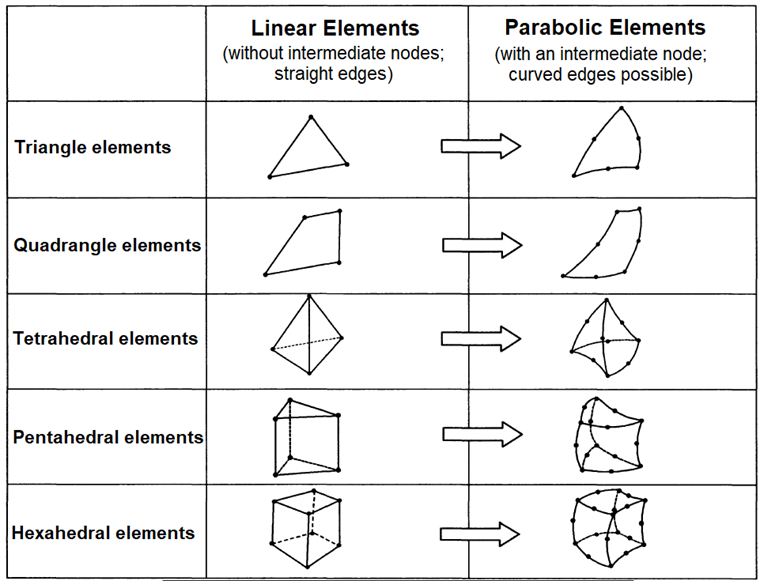Answer:
Generally, identical bilinear approach functions with 2, 3, or 4 boundary nodes are to be used, depending on which element you prefer, but there are differences in the quadrature. The differences in the quadrature are as follows:
Elastic Calculation
- Truss member: analytically 2 nodes 3 degrees of freedom
- Beam: analytically 2 nodes 6 degrees of freedom
- Surface (plate): analytically (LYNN-DHILLON-Element)
- Surface (wall): Quadrangular Gauss quadrature 2x2, triangular selective quadrature (epsilon_x; epsilon_y; gamma_xy)
- Solid: Gauss quadrature 2x2
Nonlinear calculation (for example, plasticity, and so on):
- Beam:
- 2-point Gauss quadrature in the longitudinal direction of the member
- across the cross-section Gauss quadrature 2x2
- Surface (plate):
- in the element surface: quadrangular Gauss quadrature 2x2 , triangular 3-point Gauss quadrature
- per thickness 9-point Gauss-Lobatto quadrature
- Wall: quadrangular Gauss quadrature 2x2 , triangular 3-point Gauss quadrature
- Solid: 14-point reduced Gauss quadrature (equivalent to the 3x3x3 Gauss quadrature)
